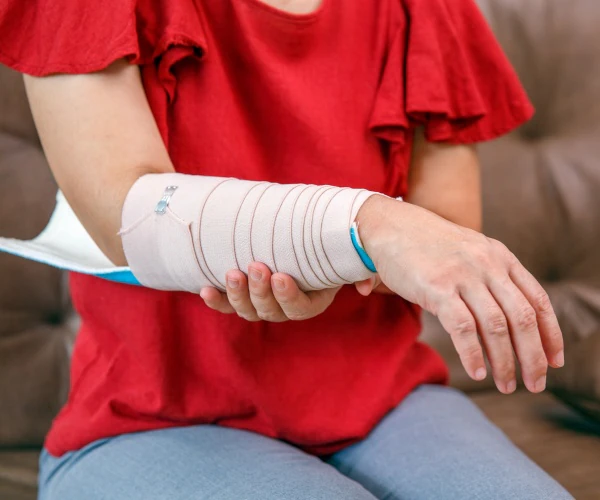Osteoporosis is on the Rise: What to Know

Dreamstime
By Lynn C. Allison From Newsmax
May is Osteoporosis Awareness and Prevention Month. Osteoporotic fractures are responsible for more hospitalizations than heart attacks, strokes, and breast cancer combined, according to the Bone Health & Osteoporosis Foundation (BHOF). While people’s experience with osteoporosis varies greatly, the good news is that it is a manageable disease.
The BHOF explains that osteoporosis is a bone disease that occurs when the body loses too much bone, makes too little bone, or both. This results in bone weakness and as a result bones can break from a fall, or in more serious cases, even from minor bumps or just from sneezing.
Special: More Than Half of Americans Over 50 Have Bone Loss. Do Something About It.
Approximately 54 million Americans have osteoporosis or low bone mass. An estimated one in two women and up to one in four men aged 50 or older will break a bone during their lifetime due to this debilitating disease.
“The number of people with osteoporosis has been consistently rising,” says Dr. Andrea Singer, associate professor in the division of women’s primary care and director of bone densitometry at MedStar Georgetown University Hospital. “This may be due to a number of factors, including the growing population over the age of 50, people not reaching peak bone mass in their younger years and therefore being more susceptible to osteoporosis later in life, and older people being more sedentary than previous generations. There are many risk factors for osteoporosis, some not modifiable and some modifiable, including family history, gender, body frame (slender build), smoking, drinking too much alcohol, and calcium and vitamin D deficiency, to name a few.”
Many people with osteoporosis don’t know they have it until they do break a bone, which is why screening is so important. Currently, screening for osteoporosis is recommended for women who are 65 and older or for women between the ages of 50 and 64 who have certain risk factors for the disease, including a parent who has broken a hip.
A DEXA scan, a noninvasive test that uses an X-ray scanner over the body to screen both soft tissue and bone, will diagnose osteoporosis. The Fracture Risk Assessment Tool(FRAX) will give you a 10-year probability of fracture.
“There is no single ‘silver bullet’ remedy for osteoporosis,” Singer tells Newsmax. “There are many medications available to treat osteoporosis and reduce the risk of fracture. They fall into two basic categories: antiresorptives and anabolics. Antiresorptive drugs work by slowing the resorption or breakdown part of the bone remodeling process. Anabolics work by stimulating the formation part of the remodeling process. More bone is formed than is taken away. The result is stronger bone that is less likely to break. Discuss the options with your healthcare provider.”
BHOF suggests these simple steps to protect your bones:
• Get enough calcium and vitamin D.
• Eat a well-balanced diet with foods that are good for healthy bones, such as fruits and vegetables.
• Exercise regularly and be sure to include resistance or weight-bearing exercises, which are critical for bone health.
• Don’t smoke and limit alcohol intake.
© 2024 NewsmaxHealth. All rights reserved.
For more on this story go to: NEWSMAX





